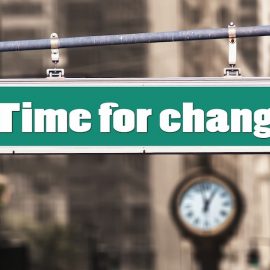

This article is an excerpt from the Shortform book guide to "Scaling Up" by Verne Harnish. Shortform has the world's best summaries and analyses of books you should be reading.
Like this article? Sign up for a free trial here .
Do you stay on top of your business’s cash flow and cash position? How are they connected to your vision?
If you’re a business owner, you naturally keep an eye on profits. But, to ensure that your business continues to grow and stay on track, you also must remain aware of your cash flow and cash position. These are vital pieces to your overall strategy.
Keep reading to learn about cash flow and cash position for your business.
Tracking Your Cash Flow and Cash Position
Once you set your business on a strategic course toward your vision, you can’t just let the business run itself. Two of the gauges to keep an eye on are cash flow and cash position.
Maintain Cash Flow
Harnish warns that all your visionary and strategic thinking might come to nothing if you don’t maintain adequate cash flow.
When implementing a growth strategy, many companies find that growth does not pay for itself. In fact, growth can quickly act as a drain on cash reserves. And that’s a problem, because you need cash to meet your payroll, finance debt obligations, meet daily operating expenses, as well as to finance new projects and invest in new customer acquisition.
In general, Harnish writes, you should strive to have two full months’ worth of operating expenses in cash. Anything less, and you’re leaving your company seriously exposed in the case of a cash crunch from unforeseen expenses or a sudden loss in sales.
| The Cost of Cash Reserves Some other business writers actually go beyond what Harnish recommends and urge firms to hold cash and other liquid assets worth three to six months of operating expenses. This is especially true for highly seasonal businesses, which need fairly high cash reserves to make it through the low-revenue parts of the calendar year. Drilling down even further, you can separate your cash reserves into 1) a monthly operating accountable to cover the expenses for the leanest month of the year, and 2) a contingency or “rainy day fund,” set aside for unforeseen catastrophes like losing a top customer, a labor strike, or natural disaster. Note that there can also be such a thing as having too much cash. If a business is sitting on several times more than the cash it needs to cover both its operating and contingency accounts, that might be a signal that leadership at the company isn’t finding useful ways to invest that money. If the interest the company is earning by holding cash is less than the return on equity it could be earning if that money was invested in a new project, then holding the cash actually represents an expensive opportunity cost. |
Focus on Cash Position, Not Just Profits
Harnish notes that many companies make the mistake of only caring about quarterly or annual profits instead of their continuous cash position. This can have grave consequences.
A cash-poor company (no matter how high its profits may be) is always considered a major credit risk by banks. Understandably, banks will be concerned that you won’t be able to meet periodic debt obligations without a healthy amount of cash on hand. After all, you can’t make monthly payments on your business loans with profits that may not materialize until the end of the year.
Furthermore, Harnish argues, banks know that certain financial statements can be easily manipulated with clever accounting to make your company look healthier than it really is. But it’s more difficult to manipulate the numbers on a cash flow statement.(Shortform note: In accounting, there are three main financial statements, each of which tells you something unique about a company’s financial health—1) balance sheets, 2) income statements, and 3) cash flow statements. A balance sheet is a snapshot of a particular moment in time, telling you what assets a company owns, what liabilities it owes, and how much equity the shareholders have. An income statement shows revenue earned over a period of time—usually quarterly or annually—as well as the direct costs associated with earning that revenue. Cash flow statements, which Harnish identifies as the most important, show the fluctuations in cash on hand over a period of time.)

———End of Preview———
Like what you just read? Read the rest of the world's best book summary and analysis of Verne Harnish's "Scaling Up" at Shortform .
Here's what you'll find in our full Scaling Up summary :
- Advice on how to guide your company as it grows from a small company to a large firm
- Why founders need to eventually give up some of their input and power
- How to build an all-star team—from senior leadership to rank-and-file






